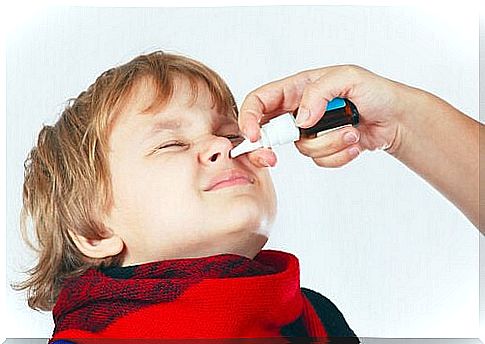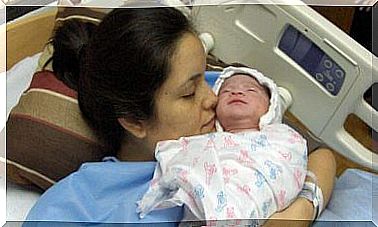Nasal Congestion In Children: What To Do?

A stuffy nose in children is a common problem. The little ones have poorer resistance to colds and flu.
A stuffy nose in children is often a symptom of these common viral infections. However, if the symptoms persist, it could also be an allergy.
If you develop cold symptoms from a viral infection, the nasal passages swell and may feel blocked. These discomforts usually resolve into a clear, flowing mucus that can gradually thicken.
If the infection is severe, the mucus may be yellowish or even greenish. This is not necessarily a sign of serious illness. However, if your child’s nasal lining is very thick, you should see a doctor.
How does a stuffy nose show in children?
Nose congestion is very common in children, especially little ones who are not yet able to blow their noses on their own.
While it is usually not severe, this symptom is worth watching if it lasts for several days. Possible causes of nasal congestion in children include:
1. Poor nasal hygiene
Poor nasal hygiene can be the cause of nasal congestion in children. The little ones tend to breathe exclusively through their noses. This means that thorough cleaning is essential.
Daily cleaning with a special nasal spray helps to reduce the risk of infectious diseases such as colds and to combat allergic rhinitis. It also reduces the susceptibility to more severe infections.

2. A viral infection
Colds are common in young children. While not dangerous, they can lead to a blocked nose, which can be very uncomfortable.
3. A malformation
There are a number of things that can cause the nasal cavity to become blocked. The blockage can be unilateral (only in one nostril) or bilateral (a blockage on both sides).
What are the symptoms of nasal congestion in children?
If symptoms, such as nasal congestion, persist in children, it can be of concern. Blocked noses are the reason for many visits to the family doctor, pediatrician or ear, nose and throat doctor.
A child’s larynx shape makes them particularly prone to breathing difficulties. It is important to keep this in mind. The following symptoms may indicate nasal congestion and may require medical attention:
- Difficulty eating
- Weight loss
- Bad sleep
- Difficult breathing or snoring
- A dry mouth
- Frequent crying
Practical tips for dealing with a stuffy nose
Here we’re going to look at a few ways parents can prevent or treat nasal congestion in children:
Keep the area moist
Dry air can make nasal congestion worse in children. The easiest way to create a humid environment is to use an evaporator or humidifier. Both devices are built to bring moisture back into the air.
Evaporators emit hot steam and humidifiers produce cold steam.
Clean your nose with a saline solution
Saline is the best natural way to treat nasal congestion and remove mucus in children. They come in the form of sprays, drops, atomizers or single-dose capsules.

Good hydration
A good supply of fluids inhibits the overproduction of mucus and facilitates its removal. Give your child plenty of water. This can also be supplemented with juice, milk or broth throughout the day. This way you can be sure that enough fluids are absorbed.
Hold the child’s head up to sleep
Also, make sure your child sleeps in a position where their head is higher than the rest of their body. This allows it to breathe better at night, even if the nose is blocked.
For babies and toddlers, place a small folded towel under their heads. Some cribs can also be tilted so that the child sleeps at an appropriate angle. Keep in mind that lying down can make a nasal congestion worse and make breathing more difficult.
A stuffy nose is usually harmless and temporary. In a few cases, however, it can cause hearing problems in children.
Hearing problems, in turn, are associated with speech delays. Follow the tips above to properly manage colds and nasal congestion and avoid future complications.









